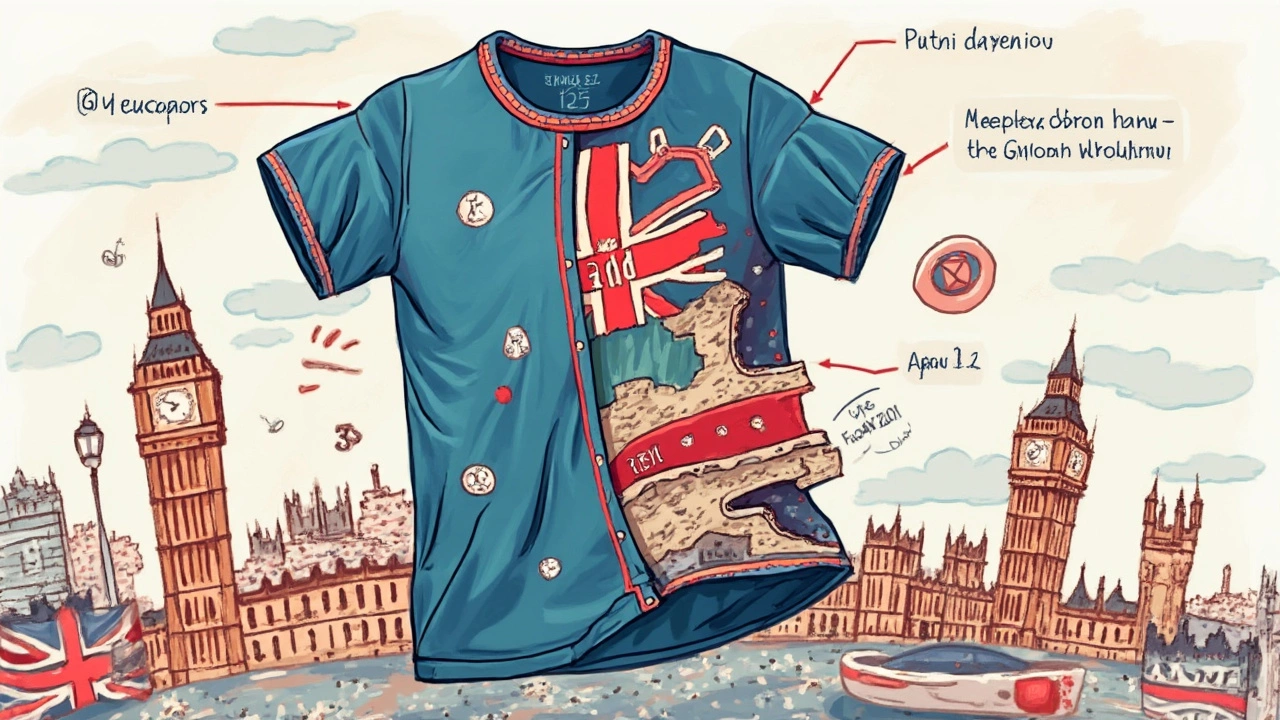Finding a high-quality t-shirt can feel like discovering hidden treasure, especially with so many fast fashion options around. So, how do you spot a keeper from a dud? Look at the fabric first. Natural materials like cotton, bamboo, or a cotton blend often indicate better quality. Softer and heavier fabrics not only feel great but also wear better over time.
Next up, inspect the stitching. High-quality shirts have tight, even stitching with no loose threads hanging around. Flip your shirt inside out and give those seams a good look. It might sound nitpicky, but it's a simple test that speaks volumes about durability.
Fabric Matters Most
When it comes to picking a high-quality t-shirt, the fabric is your first line of defense. You might think all tees are created equal, but the material can be the difference between a great fit and a wardrobe dud. A solid choice for fabric is 100% cotton, renowned for its breathability and softness. It's versatile and wears well.
But it's not just about the type of fabric. Look for terms like 'combed cotton' which indicates a step beyond regular cotton. Combed cotton is softer, more durable, and less prone to fraying. If you're into something eco-friendly, consider bamboo, which is not only sustainable but also super soft and moisture-wicking. It's a bit of an unsung hero in the t-shirt world.
Blends also have their charm. For instance, a cotton-polyester blend usually adds a bit of stretch and durability, making it great for a t-shirt that keeps its shape longer. A 50/50 blend is common, but you might find variations like 60/40 or 70/30, balancing softness with flexibility.
How to Test the Fabric
- Give it a touch: High-quality materials feel soft and smooth, not rough or stiff.
- Hold it up to the light: If it's too see-through, it might not last long.
- Scrunch it in your hand: Release and see if it wrinkles too much.
Remember, paying a bit more for a solid fabric often saves you money in the long run, as a good shirt will withstand countless wears and washes.
Check the Stitching
Alright, let's get up close and personal with your t-shirt's seams. A high-quality t-shirt won't just fall apart after a couple of washes if it has solid stitching. Here's what you need to keep an eye out for: clean, even, and tight stitches that hold the fabric together. If you spot any loose threads or big gaps, it's not going to last.
Seam Types
First, let's talk about the types of seams. A straight or lockstitch seam is common and should look consistent across the garment. Check both outside and inside for any irregularities. Another type to note is the overlock seam—common in t-shirts for a little extra durability at the edges.
Count the Stitches
Yes, I'm serious! If you're up for some DIY detective work, counting the number of stitches per inch (SPI) could be illuminating. A good t-shirt should ideally have 7-8 SPI for strength. Lower than that, and you might be looking at a fragile shirt.
Reinforcements Matter
Pay attention to areas of the t-shirt that see a lot of action, like the underarms and alongside the neckline. Quality tees might have reinforcements or extra lines of stitching here, which is a great sign that the shirt is built to last.
Ultimately, while checking stitching might seem overly detailed, it's one of the quickest ways to judge the durability of a high-quality t-shirt. Spend a few seconds in the store or when you first unbox it, and you'll be making smarter wardrobe choices.

Beware of Cheap Prints
When it comes to identifying a high-quality t-shirt, the print is a major clue. Cheap prints usually fade, crack, or peel after a few washes, leaving your shirt looking worn out way too soon. So, what should you look for?
Inspect the Print Quality
Quality prints are smooth and integrated into the fabric rather than sitting on top. Run your hand over the print. If it feels overly thick or cracks when you stretch the fabric, it's likely a cheap print. A high-quality print, like a well-done screen print, won’t budge or change texture with a little tugging.
Printing Techniques Matter
There are several ways to print on t-shirts, and not all are created equal. You might encounter the following:
- Screen Printing: The gold standard for high-quality prints, known for its durability and vibrant colors.
- Direct-to-Garment (DTG): Comparable quality to screen printing, especially great for intricate designs with lots of colors.
- Heat Transfers: Often less durable, prone to peeling, and typically found on lower-quality shirts.
Consider the Colors
Pay attention to the vibrancy of the colors. High-quality print colors tend to stay true over time, while cheaper ones fade fast. Look for prints that maintain clarity and don’t blur, even after a couple of washes.
A Quick DIY Test
Take a close look at a printed shirt you already own. After washing it a few times, does the print still look fresh? This can guide you when shopping for new shirts, helping you steer clear of cheap prints next time.
Feel the Stretch
Stretchiness is a sneaky way to tell if your t-shirt is going to be a high-quality staple or just something that stretches out of shape after a wash or two. Checking how a t-shirt holds up when you stretch it gently can reveal a lot about its durability and overall quality.
Start by holding a section of the t-shirt between your fingers and gently pull. You're not looking to remake the shirt but gently test its give. A good-quality shirt should have a little give but snap back into shape when you let go. If it stretches out with no recovery, that's a red flag.
The Blend Basics
The blend of materials used in the shirt plays a big role in its stretch. For instance, a high percentage of spandex or elastane in the material can offer a comfortable stretch and also add to the shirt's longevity by maintaining its shape. A blend often means that while you get the softness of cotton, you also benefit from the flexibility of synthetic materials.
Cheap blends, on the other hand, might stretch nicely at first but won't hold up over multiple washes. That's why it’s vital to know what you're getting into when checking the material tag.
Stretch Test Stats
Just to give you a roundabout figure, a premium t-shirt should ideally contain about 2% elastane or spandex. This amount strikes a balance between maintaining fabric shape and offering some freedom of movement.
Ultimately, the fabric type and the quality of the material fibers will give you a t-shirt that is both comfortable to wear and resilient over time. Giving a good feel of the stretch ensures you’re not just buying a shirt that looks good but one that really lasts. So next time you're shopping, take a moment to stretch a bit—or at least, your t-shirt.

Research the Brand
Before you hand over your cash for any t-shirt, take a minute to figure out who made it. This isn't just about grabbing the nearest shirt because it looks good; it's about understanding the brand's commitment to quality. Think about the big brands you already know, like Uniqlo or Patagonia. These companies have built reputations for making high-quality t-shirts that last, investing in great materials and solid craftsmanship.
Now, it's not just big names. Plenty of smaller, niche brands are out there doing incredible things with fabric and fit, too. Do a quick online search to see reviews and customer feedback. For instance, Everlane is known for its transparency and excellent basics, and they've made a name by focusing on ethically produced goods.
Brand Reputation Matters
Checking reviews can make a huge difference. Sometimes, it's not until you read a bunch of reviews that common issues come up, like shrinkage or fading. Websites like Trustpilot or brand-specific forums can give you insights about durability and true t-shirt quality.If you fancy stats, here's a quick look at a simple way to evaluate brands:
| Brand | Material Focus | Customer Rating |
|---|---|---|
| Patagonia | Organic Cotton | 4.8 |
| Everlane | Cotton, Ethical | 4.6 |
| Uniqlo | Airism & Basics | 4.5 |
So next time you're browsing, take a second to research the brand. A few clicks can save you from future disappointment and lead you to a t-shirt that's worth every penny.





